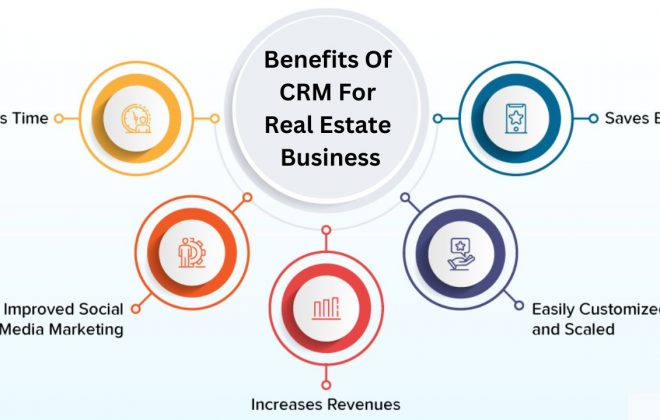Sales Team CRM: 5 Ultimate Buy-in Questions
Choosing a customer relationship management (CRM) solution is a complicated and comprehensive procedure.
One of the most important components of implementing a CRM solution is getting your sales team on board with the product.
Without buy-in from your sales team, you could end up investing in a product no one wants to use.
To avoid this pitfall, plan ahead and involve your sales team in the decision-making process. After all, they’ll be relying on the CRM software you use every day.
In this blog, we’ll explore some common questions to tackle while buying and implementing a CRM and will also discuss their potential actionable solutions. Read on!


How to increase CRM adoption within your sales team?
According to statistics, implementing a CRM solution can boost sales and team productivity by 34%.
CRM solutions reduce the manual work involved in the sales process so that it takes less time to close sales.
Employee resistance to CRM adoption is mainly due to bad implementation rather than ineffective systems. If you design your adoption process with your sales department in mind and make the necessary efforts to gain early buy-in, you may avoid future backlash and ensure widespread use of your new CRM.
You might face the below-mentioned challenges while implementing the CRM. Consider the techniques that follow to bring your sales team on board quickly.
Question 1: How do I select a CRM that aligns with my sales team’s current processes?
Choose a CRM that is compatible with the sales department’s existing processes:
Unfortunately, numerous small and medium-sized businesses implement technology without thinking about how the new software will affect their daily operations and processes. Without a thorough grasp of your sales department’s present process – who performs what and how job duties will change with a new CRM – you face the risk of user resistance.
It may be easier to make the final CRM purchase choice in a small group, but failing to speak with top sales managers can have consequences for years to come.
Conduct a thorough analysis of your sales department’s workflows and involve key stakeholders in the decision-making process. Choose a CRM that integrates seamlessly with existing tools and offers features tailored to your team’s needs.


Question 2: How can I ensure early buy-in from my sales team?
All of the specialists we spoke with agreed on one thing: failing to include the sales department in the implementation process will result in problems in the future. Of course, high-level purchasing choices are rarely decided democratically, nor should they be, but inviting a few tech-savvy sales department workers to participate in demos can help you get support from other associates.
Furthermore, bringing senior salespeople and managers on board early provides an excellent built-in support structure for associates who are averse to change.
Pilot groups are regarded as best practices when implementing any new software system, and because sales departments rely significantly on CRM technologies, it only makes sense to include salespeople in the process.
Tech-savvy early adopters of CRM are more likely to sense ownership over the installation process, which can be useful when other sales team members show displeasure or suspicion of the new system.
Hearing a coworker explain that the features of a CRM system will improve the sales process is more impactful than hearing the same message from a higher-level executive who will never use the product.
So, it is advisable to involve your sales department from the outset by selecting a few tech-savvy representatives to participate in demos and provide feedback.
Question 3: Who should oversee CRM implementation within the sales team?
While you want your entire staff to be familiar with your CRM solution, you should designate a high-performing user to serve as the CRM manager. This manager should be someone who is:
- Tech-savvy
- Resourceful
- A strong communicator
- Organized and able to set up employee training sessions.
A CRM manager will act as a liaison between your personnel and the new software, so ensure they understand the technology and can effectively explain it to others.


Question 4: How can I convince my sales team of the benefits of adopting a CRM?
Highlight the value proposition early and often:
Pushback on a CRM can happen for a variety of reasons. Staff members who are set in their ways or uncomfortable with technology may be hesitant to adopt a new system because they are concerned about the learning curve.
Furthermore, if your salespeople believe that a new system would increase their burden and complicate their employment, they are more likely to be uncooperative during the deployment process.
Prevent backlash like this by “selling” the CRM internally and emphasizing its specific sales team benefits, including CRM analytics features. When your team learns how a CRM solution may improve time-consuming processes and potentially increase sales, they’ll be much more open.
Read more about the benefits of CRM for the sales team.
Communicate the value of the CRM early and frequently. Provide concrete examples of how the CRM will address current inefficiencies and make their jobs easier.
Question 5: How can I encourage active participation and adoption of the CRM?
When you make CRM user adoption entertaining and rewarding, you’ll get less staff opposition. To encourage staff to jump on board right away, implement a CRM rewards system when the program is released. Begin with a short-term rewards system and then evaluate its need as time passes.
Offering rewards for just the first month may be enough to entice your employees to participate enthusiastically. For instance, you may provide cash bonuses or gift cards to employees who:
- Generate the most new leads in the CRM.
- Send twenty or more quotes to prospects.
- Earn ten or more electronically signed proposals using the CRM.
- Send fifty text follow-ups to prospects.
- Are most engaged in the CRM chat feature.
- Create automatic email templates for email marketing campaigns and send it to 50 or more prospects


Bonus tips:
- To make your implementation easier, ensure that you can integrate your CRM solution with third-party tools and applications that your team already uses.
- Teach your sales team common CRM jargon. Knowing and understanding terms like “360-degree customer view” can help them get the hang of the software.
If you follow these recommendations, your CRM implementation should go swiftly, with enthusiastic support from your sales team. Whether launching a new CRM system or shifting away from legacy software, include your sales staff in the process to ensure the success of your CRM implementation.
Conclusion
By addressing key questions and implementing these effective solutions, you can successfully navigate the process of buying and implementing a CRM within your sales team.
Remember to prioritize user feedback, involve stakeholders early, and emphasize the tangible benefits of CRM adoption to drive enthusiasm and ensure long-term success.
Connect with our experts and get guidance and assistance for leveraging the latest technology here: SCHEDULE NOW!
FAQs
Involving the sales team ensures that the chosen CRM aligns with their needs and processes, leading to higher adoption rates and better utilization.
Conduct a thorough analysis of your sales workflows and compare them with the features and capabilities of potential CRM solutions.
Key stakeholders from both the sales team and management should be involved to ensure all perspectives are considered.
Involve sales representatives in product demonstrations, solicit their feedback, and emphasize the benefits of the CRM in improving their daily tasks.
User feedback is crucial for
– identifying areas for improvement
– addressing user concerns
– ensuring the CRM meets the needs of the sales team.









